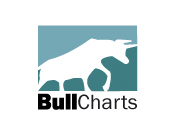Alan Hull Indicators
This page answers a number of queries that customers have asked concerning the Alan Hull indicators.
The ActVest/ActTrade Newsletters
Alan Hull publishes weekly newsletters, which include the results of his ActVest and ActTrade indicators. These systems embody some of the extensive research he has done in the field of technical analysis. BullCharts provides you with the tools to explore further beyond the information provided in the newsletter and customise your scans. However, there are some important notes to remember.
- The newsletters are authoratative. The newsletter should always be considered the authorative version of these indicators, and calculations in all other programs should be considered as approximations. There are a number of reasons why differences can occur between the newsletters and BullCharts, which are listed below.
- BullCharts does not replace the newsletters. We recommend that BullCharts be used as a tool in conjunction with the newsletter, and to extend the newsletter. It should not be used as a replacement for the newsletter. The newsletter provides additional tips and resources. Alan also reviews the list of securities being fed into his system to ensure that only high quality stocks are processed.
Benefits of BullCharts
BullCharts allows several benefits in the application of his systems. These include:
- Adjustments to Parameters. You are able to fine tune the liquidity requirements and other parameters to suit your specific needs.
- Analysis of different securities and markets. BullCharts allows you to apply Alan Hull's analysis to all securities in the ASX market, or to other data sources such as US markets.
- Incorporation with other trading systems. You can modify the BullScans to include other technical or fundamental criteria.
- Interactive analysis. BullCharts gives you access to all of the tools you expect from professional technical analysis software.
Reasons for discrepancies
BullCharts attempts to represent the Hull formulas closely, however there are a number of reasons why results may vary slightly between the BullCharts formulas and the values published in Alan Hull's newsletter. Alan Hull does not use BullCharts to generate reports. Therefore differences in results can arise from differences between the programs. These include:
- Differences in data. Each data vendor has its own method of processing and storing stock market data. Therefore there are often slight discrepancies between data provided by different data vendors. Two of the main causes of differences are how volume is processed, and how corporate actions are processed. Even very slight differences in underlying data have the potential to generate noticable differences in the indicator results.
- Varying parameters. In order to provide the most relevant data, Alan Hull fine tunes the parameters to some of the newsletter reports. For logistical reasons, this can not be taken into consideration with BullCharts.
- Formula adjustments. Similarly, Alan does make improvements to his formulas from time to time.
- Rounding differences. Computers perform calculations to a high degree of precision, however each program is subtly different. When a rounding difference falls on a critical calculation (such as determining if the ROAR has exceeded its threshold) then the results between two programs can be different. Similarly, the internal mechanics of each program are different, which could also potentially lead to differing results.
- Security list. Before calculating his reports, Alan reviews the list of securities being fed into his system to ensure that only high quality stocks are considered. This is a qualatative process that can not be matched by BullScan. BullScan (by default) will scan all ordinary securities and will therefore find more securities then are listed in the newsletter.
Significance of discrepancies
One of the golden rules of technical analysis is objectivity. For Alan Hull's formulas the exact numerical value is less important than the consistent application of the trading system. While some differences in actual numerical values may appear, the principles designed into Alan Hull's indicators are the dominant effect in the results.

